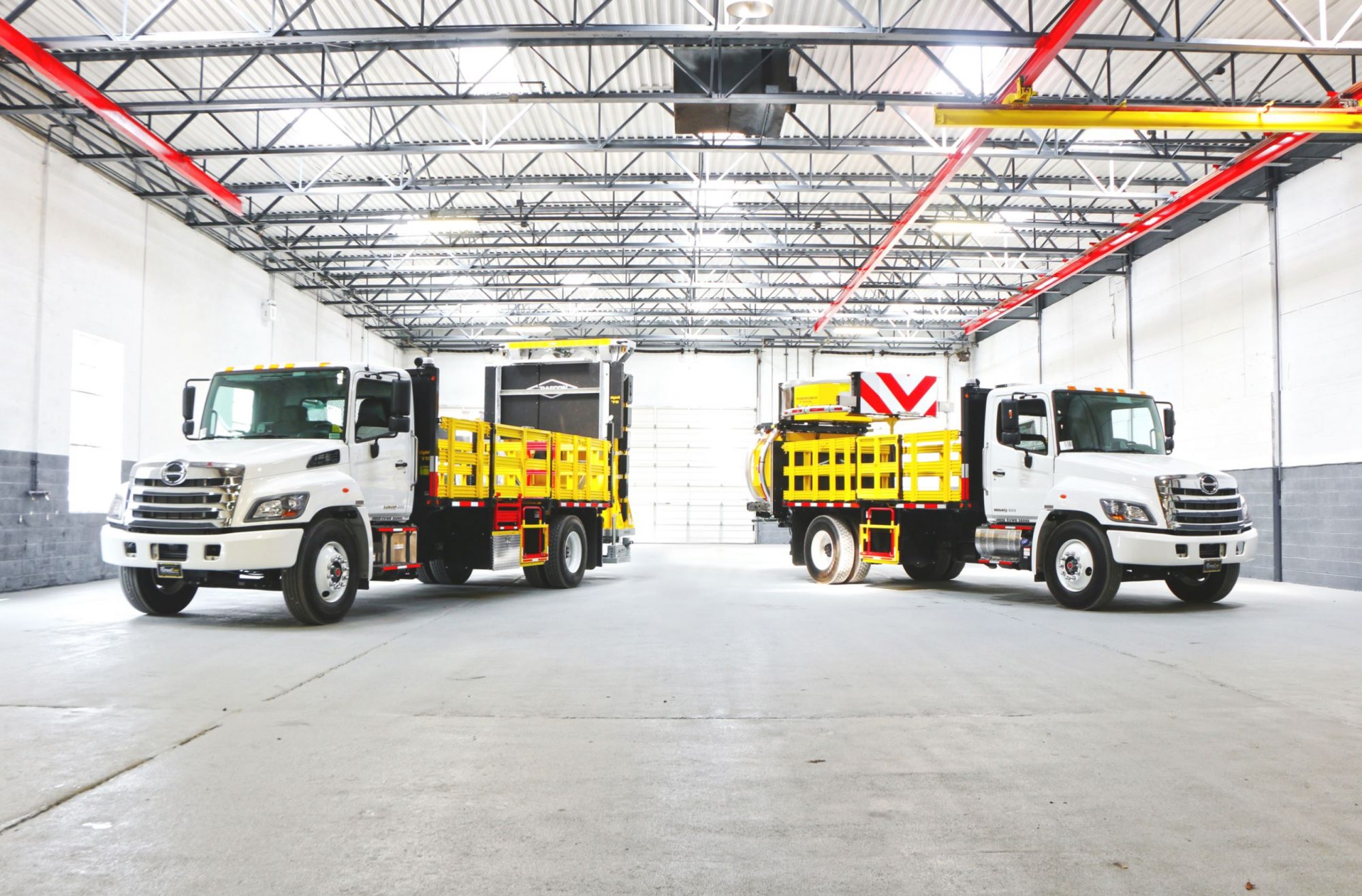Nov 25, 2019
OEMs Manufacture Attenuators to Meet Modern Crash Conditions
BY AsphaltPro Staff

Highway work zones are becoming an increasingly dangerous environment for highway workers. According to Federal Highway Administration, work zone crashes are on the rise due to the amount of construction work being done, more cars on the road, and especially distracted driving.
“Distracted drivers often times miss the warning signs of an approaching work zone and mistakenly enter the zone, putting the crew’s lives and their own life in danger,” said Taylor Wills, Marketing and Business Development Associate at Royal Truck & Equipment Inc., Coopersburg, Pennsylvania. Additionally, the size and weight of vehicles in general has significantly increased over time, leading to more damaging results in collisions.
“For example, the 2018 Honda Civic sedan is almost one foot longer and approximately 300 pounds heavier than the 2005 model of the car,” Wills said. “On the whole, you will see this trend occurring in almost all passenger vehicles over time.”
According to the U.S. Department of Transportation, the total number of car accidents increased by 20 percent between 2007 and 2016. Additionally, the total number of licensed drivers in the U.S. has doubled between 1970 and 2019, according to FHWA.
As a result, crash test criteria for roadside safety hardware must continuously evolve to keep up with modern challenges and modern vehicles. The American Association of State Highway and Transportation Officials first published its Manual for Assessing Safety Hardware in 2009, and updated it with a second edition in 2016.
“MASH criteria gives manufactures of roadside hardware a consistent method for evaluating whether their products perform as designed under specific test conditions,” said Kelly Hardy, Safety Program Manager at AASHTO. “State DOTs and other transportation agencies can then use the results from MASH testing to determine whether a roadside device meets their needs.”
According to MASH’s final implementation agreement, temporary work zone devices manufactured after December 31, 2019, must be successfully tested according to the 2016 edition of MASH. Devices manufactured on or before this date and successfully tested according to NCHRP 350 or the 2009 edition of MASH, may continue to be used throughout their normal service lives.
OEMs Answer the Call
MASH criteria ensure that attenuators used on TMA trucks throughout the country are engineered to safely absorb the force of impacting vehicles and protect the work crews in front of them.
“Higher standards of testing mean we’re using equipment that is proven to be safer, and we’re proud knowing the work zone is a safer place as a result,” said Michael Zolnoski, Marketing Director at Curry Supply Co., Martinsburg, Pennsylvania. All of Curry Supply’s crash attenuator trucks feature Scorpion TMAs, built using MASH criteria.
For a truck mounted attenuator to be MASH approved, it must pass tests 3-50, 3-51, 3-52, and 3-53 as outlined in the Manual for Assessing Safety Hardware.
“These tests judge how well the attenuator responds to an impact, with each test serving to replicate different real-world crash scenarios,” Wills said. “Once the attenuator passes all of these tests, the FHWA issues a letter of eligibility, thus certifying that the unit is MASH approved.”
Royal began explaining MASH requirements to its customers more than a year ago so they would understand how changing criteria would impact their businesses.
According to Wills, Royal has better-equipped its TMA trucks in a number of ways, including the use of high quality lights for improved visibility; incorporating the pulsar option, radar and messaging capabilities on TMA arrow boards; and, of course, using MASH-compliant attenuators on its trucks.
Royal began offering MASH-compliant attenuators in the second quarter of 2019 as an option to their customers. In the third quarter of 2019, they began using only MASH compliant attenuators on all of their TMA trucks. The company outfits its trucks with Verdegro’s BLADE TMA or TrafFix Devices’ Scorpion II TMA.
“By combining our rugged build construction with Scorpion TMAs, our crash attenuator trucks offer full width impact protection along the entire length of the TMA unit and redirect errant vehicles away from the rear of the truck,” Zolnoski said.
FHWA maintains a list of barrier terminals and crash cushions (including truck-mounted attenuators) that have been issued an eligibility letter by FHWA, available here.
MASH In Action
MASH’s final implementation agreement has also urged agencies to replace existing highway safety hardware that has not been successfully tested to NCHRP Report 350 or later criteria. Agencies were also encouraged “to upgrade existing highway safety hardware to comply with the 2016 edition of MASH either when it becomes damaged beyond repair, or when an individual agency’s policies require an upgrade to the safety hardware.”
The agreement also states that only safety hardware evaluated using the 2016 edition of MASH criteria will be allowed for contracts on the National Highway System with a letting date after the dates below:
- December 31, 2017: w-beam barriers and cast-in-place concrete barriers
- June 30, 2018: w-beam terminals
- December 31, 2018: cable barriers, cable barrier terminals, and crash cushions
- December 31, 2019: bridge rails, transitions, all other longitudinal barriers (including portable barriers installed permanently), all other terminals, sign supports, and all other breakaway hardware
It also states that FHWA will no longer issue eligibility letters for highway safety hardware manufactured after the above dates if they have not been successfully crash tested to the 2016 edition of MASH.
See AASHTO’s Roadside Design Guide and AASHTO’s Manual for Assessing Safety Hardware for guidance on selecting the appropriate Test Level (TL) based on traffic using the facility.
“Manufactures and state DOTs are working to develop and implement MASH complainant roadside hardware,” Hardy said. “However MASH devices suitable for all uses may not be available by the last deadline. State DOTs are focused on updating their internal policies and procedures to use MASH devices as they become available.”